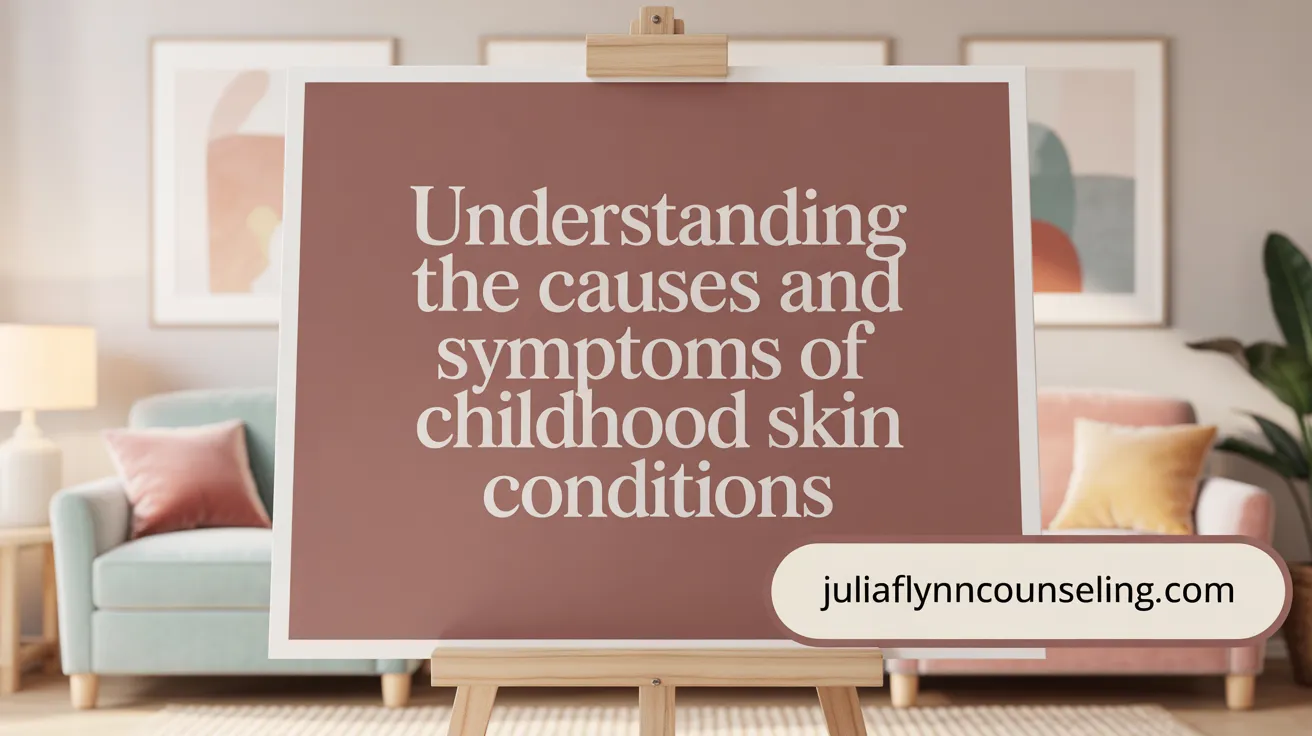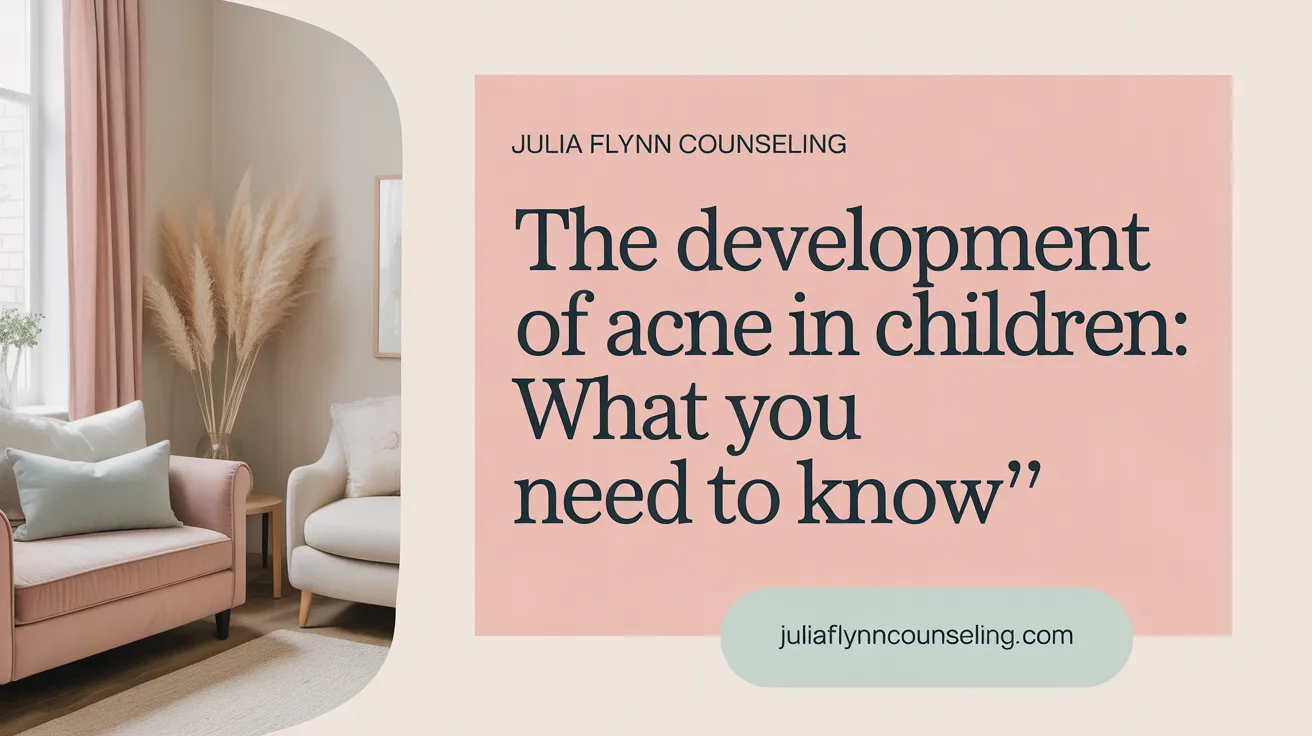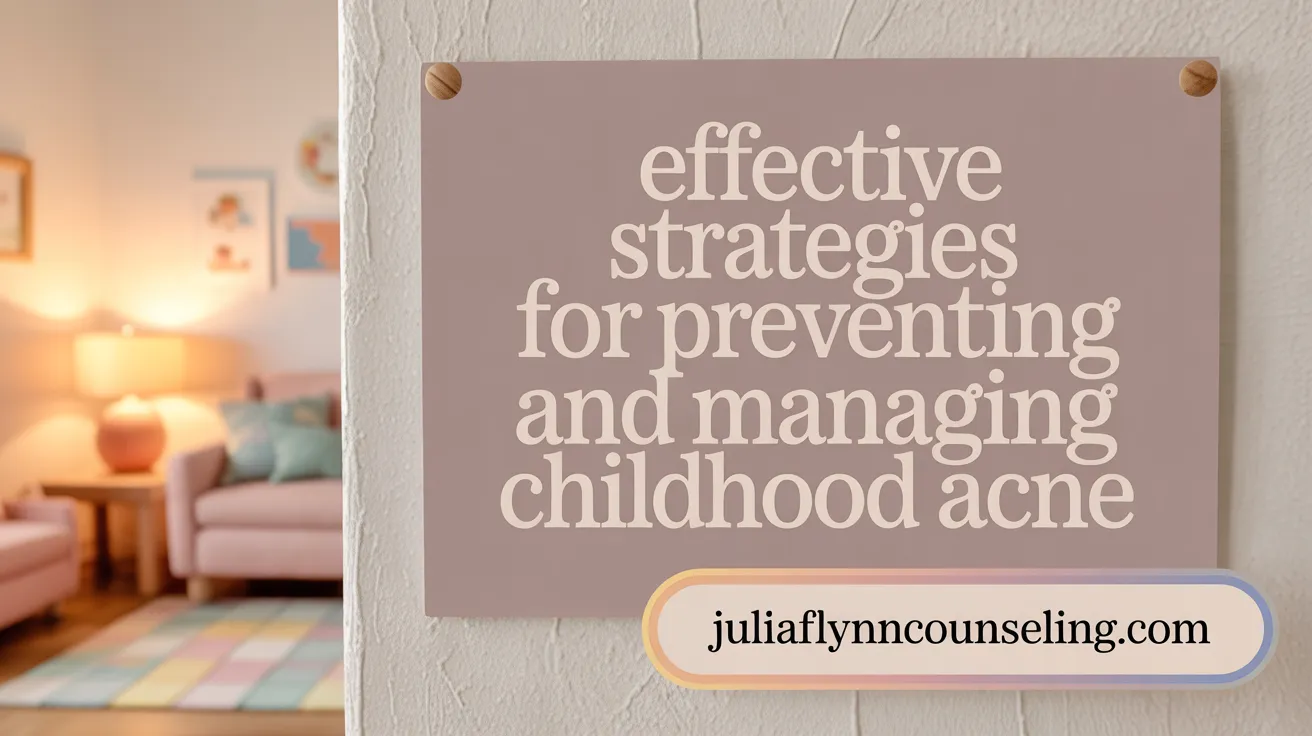The Prevalence and Impact of Childhood Acne
Acne is not just a teenage concern; it can affect children even before puberty starts. Understanding what causes acne, how it develops, and the steps to prevent and manage it is crucial for parents and caregivers. This article provides a comprehensive guide on acne in young children, offering actionable prevention tips and treatment options to help maintain healthy skin and boost confidence during formative years.
Causes and Symptoms of Acne in Children

What causes acne in children and what are its symptoms?
Acne in children develops mainly because of hormonal changes during puberty. These hormonal shifts increase the production of oil (sebum) in the skin, which can clog hair follicles. When hair follicles become blocked, dead skin cells, oil, and bacteria build up, leading to inflammation and the formation of different types of skin lesions.
Besides puberty, other factors can contribute to acne. Hormonal fluctuations related to pregnancy, menstrual cycles, or the use of certain medications like corticosteroids can influence sebum production. External irritants such as skin oils, greasy cosmetics, or friction from tight clothing and hats also play a role.
Children with a family history of severe acne are more prone to develop this condition.
The typical symptoms include small bumps and lesions, such as whiteheads, blackheads, and red pimples called pustules. More severe cases may involve nodules and cysts, which are larger, painful, and filled with pus. Often, acne lesions appear on the face, but they can also develop on the chest, upper back, shoulders, and neck.
This condition might leave scars if not properly treated, especially when the acne is severe or persistent. Managing acne early with proper skin care and medical treatments can prevent further complications.
In summary, acne causes are interconnected with hormonal activity and external influences, with symptoms involving various types of bumps and inflammations mainly on the face and nearby areas. Recognizing these signs early and seeking appropriate treatment helps mitigate long-term skin damage and contributes to emotional well-being.
How Acne Develops Over Time in Children

How does acne develop in children over time?
Acne in children mainly results from hormonal changes that occur during puberty. As kids enter adolescence, their bodies produce higher levels of androgens, which are hormones that stimulate the sebaceous glands in the skin to produce more oil, or sebum.
This excess sebum, combined with dead skin cells, can clog hair follicles, creating what are known as comedones. These include whiteheads, which are closed bumps, and blackheads, which have oxidized and darkened surface material.
Bacteria such as Propionibacterium acnes, which normally live on the skin, can then invade these clogged pores. Their presence causes inflammation, resulting in lesions like pustules, papules, or cysts. This process can lead to redness, swelling, and in some cases, scarring.
Various factors influence how acne develops. Genetics play a role; children with a family history of severe acne are more prone. Environmental conditions, such as humidity and exposure to certain skin products, can worsen the condition. Medications like corticosteroids might also contribute.
Interestingly, neonatal and infantile acne can appear due to maternal hormones passed during pregnancy or elevated neonatal testosterone levels. These cases typically resolve on their own without lasting scars.
Overall, the development of acne involves a mix of hormonal activity that increases sebum, changes in skin cell shedding, bacterial growth, and immune responses, which all change and evolve over time, sometimes improving by early adulthood but often requiring treatment to prevent worsening or scarring.
Effective Prevention Techniques for Childhood Acne

What prevention tips can help reduce the risk of acne breakouts in children?
Preventing acne involves adopting daily habits and choosing suitable skincare products. Start by encouraging children to follow a gentle cleansing routine, washing their face twice a day with a mild, non-comedogenic cleanser. It’s essential to avoid harsh scrubbing or using exfoliating tools, which can irritate the skin and worsen acne.
Keeping the skin clean and dry is vital, especially after sweating or physical activity. Children should also be advised not to touch or squeeze pimples, as this can lead to increased inflammation, scarring, and potential spread of bacteria.
Diet plays a role in skin health, so promoting a balanced diet rich in fruits, vegetables, and healthy fats while limiting sugars and processed foods can help reduce breakouts. Additionally, keeping hair washed regularly and away from the face helps prevent excess oil transfer to the skin.
Using oil-free, non-comedogenic skincare and makeup products is recommended to prevent pore-clogging. Protecting the skin from friction, pressure, and excessive sun exposure is also beneficial.
Teaching children to avoid picking at their skin and maintaining overall good hygiene—such as changing pillowcases weekly and washing hands regularly—can reduce the risk factors associated with acne. These simple but effective habits help minimize irritation and maintain healthier skin during puberty and beyond.
Treatment Approaches for Managing Acne in Children

What treatment options are available for managing acne in children?
Managing acne in children depends on how severe the condition is and the child's age and willingness to adhere to treatments. Mild cases usually respond well to simple skincare routines, including gentle washing of the face with warm water and mild soap once or twice daily. Over-the-counter topical products are popular, such as those containing benzoyl peroxide, salicylic acid, or topical retinoids. These are applied to all affected skin areas to help unclog pores and reduce inflammation.
For moderate to severe acne, healthcare providers often prescribe stronger topical treatments. These can include topical antibiotics to fight bacteria, retinoids to prevent pore clogging, or a combination of medications. In more stubborn cases, systemic therapies—medications taken orally—may be necessary. Common systemic options include antibiotics to control bacteria and inflammation, hormonal treatments like birth control pills for girls, and in cases of severe or resistant cystic acne, isotretinoin (brand names: Accutane, Sotret) might be prescribed.
Isotretinoin is highly effective but comes with potential side effects and strict regulatory requirements, including regular medical monitoring. The goal of all treatments is to improve the child's skin, minimize scarring, and boost confidence. It is important to remember that results typically take several weeks or even months. Regular follow-up with healthcare professionals helps ensure safe and effective management of acne in children.
Guidance for Parents and Caregivers on Acne Prevention and Management

How can parents, caregivers, and guardians best prevent and manage acne in children?
Parents and caregivers play a vital role in helping children prevent and manage acne effectively. Establishing a consistent skincare routine is essential. This routine should include gentle washing of the face two times a day with warm water and a mild, non-abrasive cleanser. Avoiding harsh scrubbing or exfoliating brushes prevents irritation that could worsen acne.
Using non-comedogenic products, which do not clog pores, is also crucial. This applies to facial cleansers, moisturizers, and makeup. Encourage children to remove makeup thoroughly at the end of each day and to wash their face after sweating from sports or outdoor activities.
Promoting healthy lifestyle habits can significantly decrease the likelihood of breakouts. A balanced diet rich in fruits, vegetables, and healthy fats, along with adequate hydration, supports skin health. Managing stress through relaxation techniques or physical activity can also reduce flare-ups triggered by hormonal changes.
It’s important to educate children that acne is a common part of adolescence and to foster patience, as skin healing takes time—often several weeks to months. Monitoring for any signs of worsening or persistent acne helps identify when to seek professional help. Protecting the skin from irritation caused by tight clothing, greasy hair products, or heavy, oily cosmetics further prevents aggravation.
When acne remains severe, persistent, or causes emotional distress, consulting a dermatologist ensures appropriate treatment options, such as topical or oral medications, are provided to prevent scars and support emotional well-being.
Supporting Healthy Skin and Confidence in Children
Acne in young children, while common and often temporary, can significantly affect their self-esteem and comfort. By understanding its causes and development, parents and caregivers can adopt effective prevention strategies and recognize when professional treatment is necessary. Prompt and gentle care, combined with a supportive environment, helps children navigate this common skin challenge with confidence and resilience.
